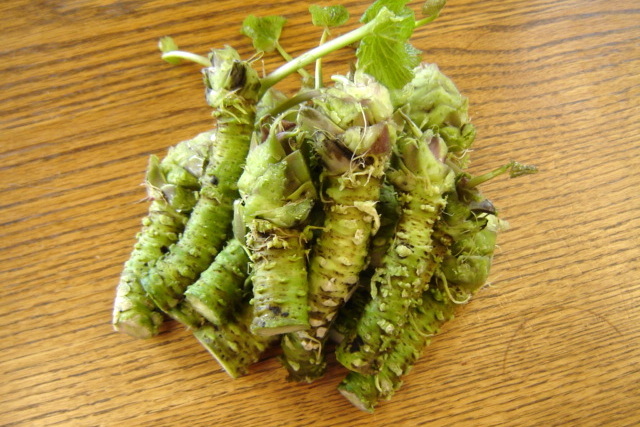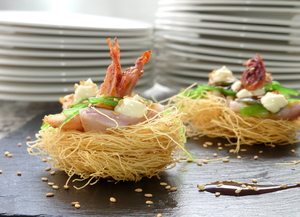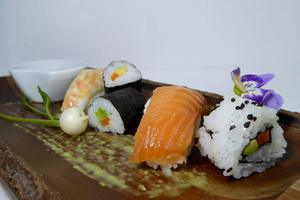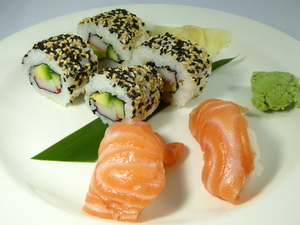Wasabi
Seasonal period:
All year
Allergens
Wasabi is a Japanese condiment. It’s extracted from the root of the plant with the same name, a spicy radish with the scientific name Wasabia japonica cochlearia wasabi or eutrema japonica, which belongs to the Brasicaceae (or Cruciferae) family, to which radishes, mustard or cabbages belong.
It’s extremely spicy and it’s used mainly mixed with soy sauce to dip in sushi. It’s generally used to decorate fish or meat dishes.
It’s Its strength comes from the vapours transmitted through the nostrils which cause a burning sensation. This sensation doesn’t last long unlike the spiciness from peppers. Wasabi only grows naturally in Japan and the Sakhalin Island.
Nutritional information (0.1 kg)
Energy
110.0
kcal
Carbohydrates
23.5
g
Proteins
4.8
g
Lipids
0.63
g
Sugars
0.0
g
Salt (Sodium)
26.0
mg
Folic acid
18.0
ug
Vitamin C
41.9
g
Vitamin A
2.0
ug
Zinc
1.62
mg
Iron
1.03
mg
Calcium
128.0
mg
Cholesterol
0.0
mg
Polyunsaturated fatty acids
0.0
g
Monounsaturated fatty acids
0.0
g
Saturates
0.0
g
Fiber
7.8
g
The data is merely a guide and should not be used for medical purposes. Those responsible for the web disclaims any responsibility.
Recipes
-
Type of dish
- Beers
- Cocktails
- Breakfasts and brunch
- Burguers
- Juices, milkshakes and beverages
- Shellfish
- Bread and pastries
- Pizzas, patty
- Dessert
- Pasta
- Sándwich
- Pastries
- Finger foods
- Ice creams and sorbets
- Legumes
- Salads
- Eggs
- Patty
- liqueur
- Harvard plate
- Main course
- Meats
- Fish
- Birds
- Vegetables
- Soups and creams
- Rices
- Coffee, chocolate and infusion
- Cheeses
- Appetizers and canapes
- Temperature
- Cuisine type
- Additional culinary preparation
- Conservation technique
- Seasonal recipes
-
- Aromatic herbs
- Beverages
- Big game hunt
- Bread and pastries
- Canned goods and pickles
- Cereals
- Condiments, spices and additives
- Cooked, salted, preserved and cold meats
- Dried fruits and nuts
- Dry pulses
- Edible oils and vinegars
- Eggs and derivatives
- Feathered game hunt
- Fish cuts
- Fishes
- Insects
- Kitchen and bakery tecniques
- Kitchen and bakery utensils
- Meat cuts
- Meats
- Milk, cream and derivatives
- Mushrooms
- Offal
- Pasta, rice, flour and derivatives
- Poultry
- Seafood
- Service techniques
- Service utensils
- Vegetables cuts
- Vegetables, fruits, tubers and seaweed




